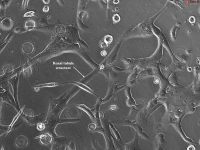Mitochondria are considered as the main source of reactive oxygen species (ROS) in the cell. For this reason, they have been recognized as a source of various pathological conditions as well as aging. Chronic increase in the rate of ROS production is responsible for the accumulation of ROS-associated damages in DNA, proteins, and lipids, and may result in progressive cell dysfunctions and, in a consequence, apoptosis, increasing the overall probability of an organism’s pathological conditions. The superoxide anion is the main undesired by-product of mitochondrial oxidative phosphorylation. Its production is triggered by a leak of electrons from the mitochondrial respiratory chain and the reaction of these electrons with O2 . Superoxide dismutase (MnSOD, SOD2) from the mitochondrial matrix as well as superoxide dismutase (Cu/ZnSOD, SOD1) present in small amounts in the mitochondrial intramembrane space, convert superoxide anion to hydrogen peroxide, which can be then converted by catalase to harmless H2 O. In this chapter, we describe a relation between mitochondrial membrane potential and the rate of ROS formation. We present different methods applicable for isolated mitochondria or intact cells. We also present experiments demonstrating that a magnitude and a direction (increase or decrease) of a change in mitochondrial ROS production depends on the metabolic state of this organelle.






